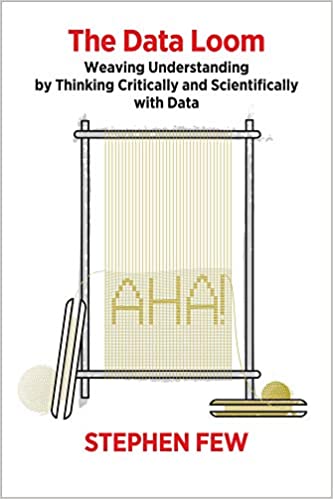The Data Loom: Weaving Understanding by Thinking Critically and Scientifically with Data
It is very disappointing to see 1-star reviews on Amazon page for this book. Someone bought a book about critical thinking (!!!) and left 1 star review just because it is not a book about weaving techniques (!!!). Someone just does not think it is useful, therefore 1 star with no detailed explanation. Is it critical thinking? Not at all. It is a negative thinking, but not critical. People are looking for simple answers. An instruction to use some software to convert data into a dashboard in 3 clicks will be extremely popular. Even if the dashboard will be based on erroneous data. Even if the dashboard will be useful only to get misleading ‘insights’. Even if what you do makes no sense at all. People do not care about senses. People are in hurry. They have no time to read philosophy books, they have no time to think, they have no time to sleep. They are looking for an instruction to do their job faster to get a bonus. Good thing – not all people who work with data are looking for quick and simple answers to simple questions. And Stephen Few is asking great questions in this book. Questions with no simple answers.
Do these data make sense? Do our questions about the data make sense? Does our work make sense? Working with data without asking questions about data origin, data quality, context, cause, usefulness makes no sense. Preparing a report in hurry makes no sense. We need time to sleep well, to ask questions, to explore data, to understand context, to ask questions again.
Do not compare this book with other books by Stephen Few. Do not think “it’s a small book about thinking and I can think well without a book, I’ll better buy one of his bigger and more practical books about data visualization”. Just stop for a day, get into a comfortable armchair (in my case it was a hammock I hung in a park), and read this short, but particularly important book. Then start asking questions that have no simple answers. And I will be packing my backpack. The best place to sleep well for me is a hammock in the middle of a forest. And it is important. Because I work with data.

